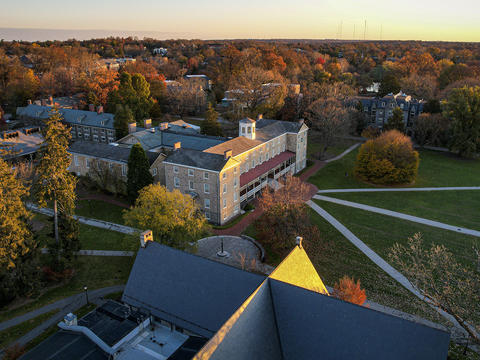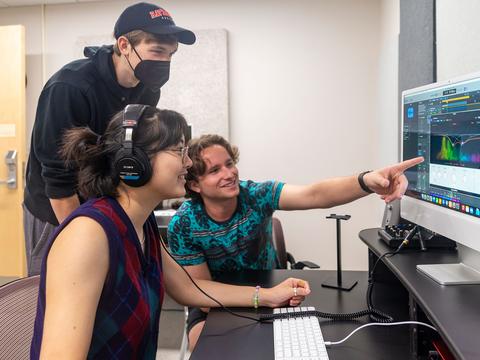Constructing a Peace Plan
Details
This scene did not take place in Washington, D.C., Belgrade or Paris but in Sharpless Auditorium, where students in Haverford's "History 234" course conducteded their own version of a Kosovo peace negotiation. In a class on politics and nationalism in the Balkans, historian Alexander Kitroeff asked students to tackle the same issues and problems surrounding the conflict that currently divides former Yugoslavia.
The class divided into four groups: the European Union, the United States, Serbia and the Kosovar Albanians, and attempted to construct a peace plan that would end the fighting in Kosovo. Like the real players they simulated, however, negotiations broke down with accusations coming from all sides. There also were numerous debates: over whether a buffer zone between the Kosovo and Serbia is feasible or desired; whether peace-keeping troops would include troops from NATO member states; whether NATO would aid Serbia, as well as Kosovo, in economic development and recovery from bomb damage; whether the peace plan should include preventative measures against possible future conflicts in Macedonia, Vojvodina and other areas. This last issue placed the European Union against the United States and ultimately left the negotiations at a standstill.
The simulation was the culmination of a spring semester spent discussing nationalism, religion and politics in the Balkan region. The syllabus that was distributed at the beginning of class in January became obsolete in a matter of months, when the Paris peace negotiations failed and NATO bombing began. At that point, the focus of each student group switched from the break up of Yugoslavia and the Bosnian conflict towards Kosovo. As the class watched the conflict unfold, most students followed newspaper reports, television interviews and coverage on the internet. Professor Kitroeff also invited two experts to speak to the class: Michael Sells, professor of religion at Haverford College and author of The Bridge Betrayed: Religion and Genocide in Bosnia, and Mihailo Crnobrnja, a Serb dissident and current citizen of Canada.
Crnobrnja, who had been an economic advisor to Slobodan Milosevic, as well as theYugoslav ambassador to the European Union, visited the campus in mid-April from the College of William and Mary where he is the Borgenicht Scholar-in Residence. He spoke to the class about the break up of Yugoslavia and later gave a public lecture on the specific situation in Kosovo.
Crnobrnja condemned Milosevic's manipulation of nationalism and his disregard for the well-being of Serbians, but he painted a much different picture of Milosevic as a person. He suggested that there are two diametrically opposed Milosovics: the private, caring Slobo and the public, political, brutal Milosevic.
Crnobrnja provided an historical backdrop to the conflicts in the Balkan region and first-hand knowledge of more recent events and leaders in Yugoslavia. "The class tried to uncover the political and interest-based motivations of the nationalist conflicts in the region and to debunk the stereotypical view that portrays the Balkans as culturally retrograde and inherently unstable," explains Kitroeff. " Crnobrnja's talk not only helped us examine those issues, but provided a human dimension to the material we covered in the course."
--Katy Wagner '01



